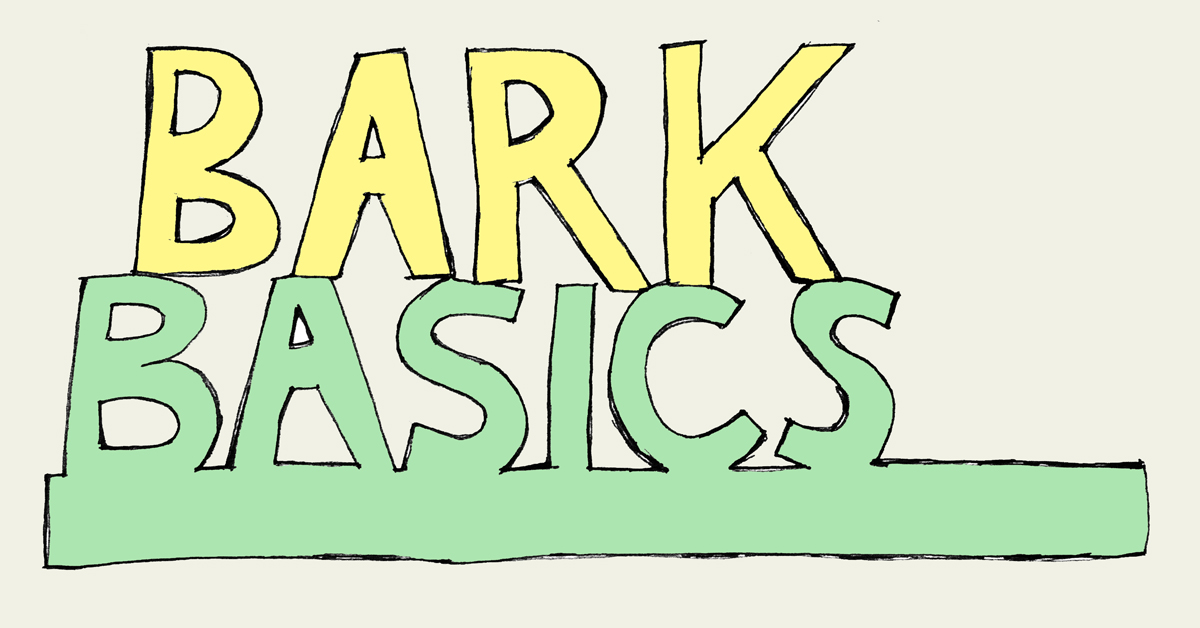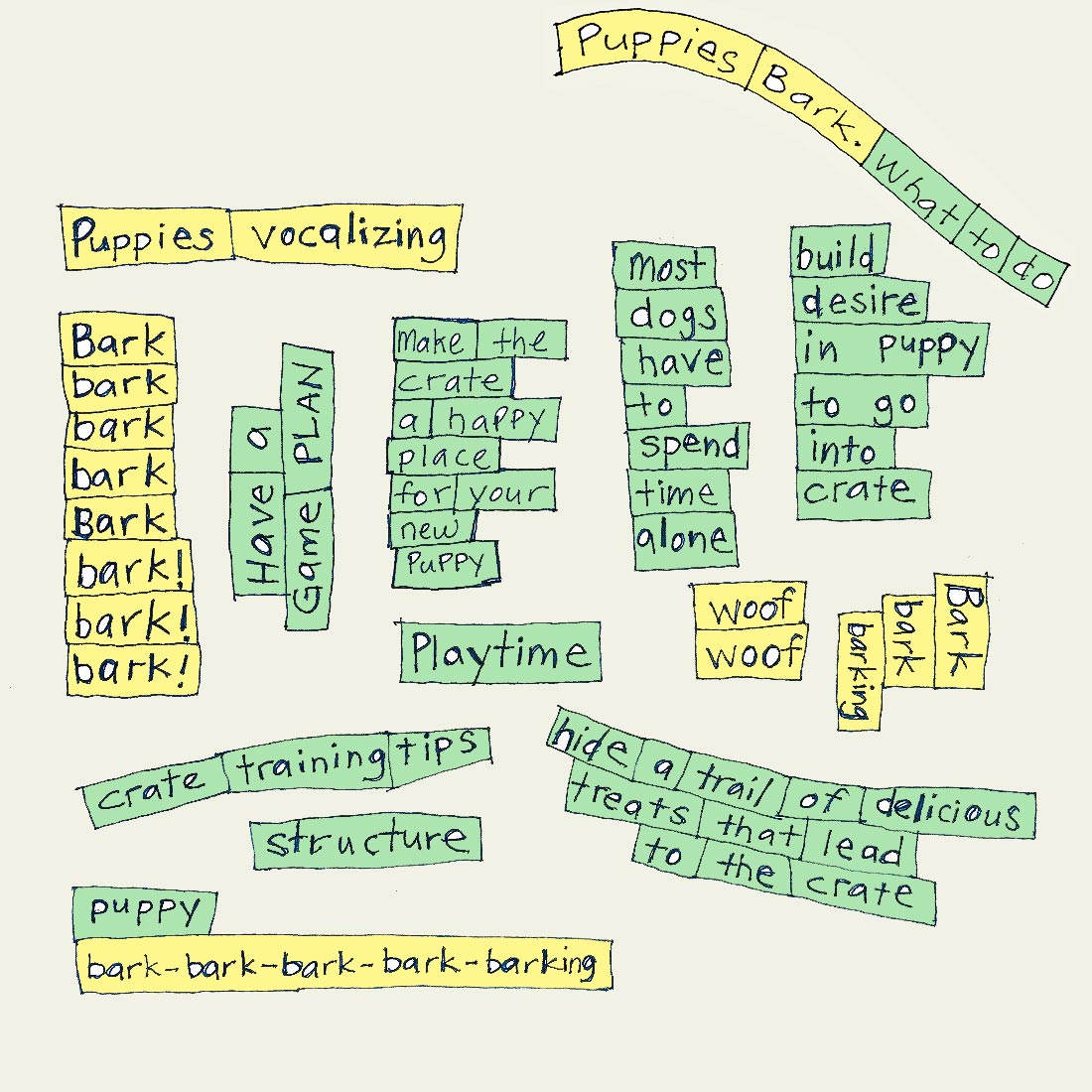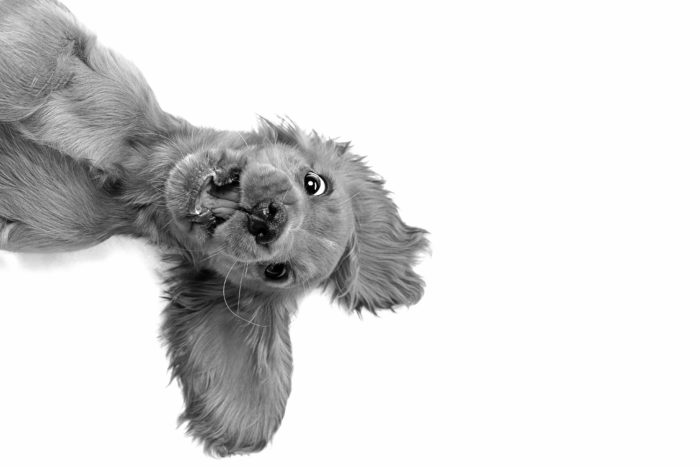
Puppies bark. The problem isn’t that they bark, the issues arise from how we deal with the barking. Learning some barking basics can help prevent or respond appropriately if you need to .
Thankfully more breeders are starting to do some great early work with their pups. This means that the first time the puppy is separated from his mom and littermates isn’t when you bring him home. This means that the first time the puppy goes into a crate isn’t when you introduce him to one. If your new pup is experiencing all these things for the first time know that this is stressful. You may experience different degrees of whining, crying and barking. How you handle it is what counts.
The Game Plan
The early crating and structure that you provide for your new puppy as well as prepping him for alone time go hand in hand with helping to prevent problem barking. Other priorities for the puppy include age-appropriate physical and mental exercise, playtime, socialization trips and lots of preventative exercises. It is advantageous to you and the puppy to get into a well-run puppy socialization class and gain the guidance and support of a great coach.
Crate Training Tip
Make the crate a happy place for your new puppy. Build up his desire to want to go into the crate. Hide a trail of delicious treats that leads to the crate and inside the crate place a super high-value prize such as a raw knucklebone or a kong stuffed with steak and cheese. Place this prize just inside the door and don’t let the puppy get to it. Build up a little frustration in your pup by preventing him from getting to the prize. Let him in for just a few seconds then bring him out and close the door again. Repeat this game a few times. Toss delicious treats into the back of the crate, repeat as pup comes out – treats for going in, no treats for coming out. As you toss the treat in, use the phrase, go in or in your crate.
Request Barking
Request barking may start with a puppy barking because he wants out of the crate or to go outside. New starry-eyed puppy parents don’t know what they are getting themselves into. A common but unfortunate scenario you want to avoid is thinking, ‘My puppy is so smart, he is already telling me when he wants to go outside!’ Tread very carefully here! Turn this around; you should be the one who decides when your puppy is going out for bathroom breaks and for playtime. Get to him before he starts barking and provide plenty of opportunity for him to get out of the crate and engage in training, play, cuddles or bathroom breaks. Avoid taking your pup out of the crate if he is barking. If you must let him out try and get at least 30 seconds of quiet first.
Request barking is just that, the puppy is barking at you because he wants something. He wants to go out, he wants to play, he wants you to give him attention, or he wants food. And on it goes, once it starts it will spread to lots of different requests and it can drive new puppy parents crazy.
Frequently puppies that bark in their crates are not crated when their people are at home and awake. Too much freedom is given and when folks try and crate the puppy he complains about this new plan by barking. Hey, who likes change! Our goal is a puppy who is calm and comfortable in their crate for different stretches of time while you are at home and awake, and going about your regular routine. You need to be the one to teach your puppy this. Always serve up safe and tasty chew things for your pup to enjoy in his crate.
If the puppy is out of his crate, you should be attending to him or he should be anchored somewhere safe and be provided with something appropriate to chew on. Avoid letting your puppy wander unattended around the house. Structure and boundaries now are going to help condition a dog that is calm and trustworthy in the house later. Short cuts make for long journeys.
Sometimes undesirable barking from new puppies is stress or frustration from being left alone or from being crated or sequestered in another part of the house from you or from family activity.
Most dogs will have to spend some time alone. It’s our job to prepare our pups to be able to deal with our absences. If you teach your puppy from day one that this is no big deal you should have smooth sailing over the course of his life.
Avoid big goodbyes and emotional hellos when coming and going from your house. Play it cool with a consistent exit cue, I say BRB, add a yummy treat to this. The old advice of ignoring your pup when you come and go has been replaced with the suggestion of calm exits and greetings. Ignoring our puppies can cause them stress. It is ok to acknowledge your puppy! Your calm and supportive behavior helps to keep your puppy feeling comfortable.
* Your puppy should always get a delicious kong when you leave (or other safe food stuffing toy) filled with fabulous food that he is interested in eating and works to get at. Stockpile some and pop one in the crate just before you leave the house.
Barking Basics
Your dog’s vocalizing shouldn’t be an annoying aspect of life. A fun part of raising a puppy is learning the different nuances of their voice. Some dogs use their voices when they are happy and playful. Some dogs have a distinct distress call when they must get outside for bathroom quickly. Other dogs are very vocal about their contentment as they get a good tummy rub.
* Stuffing kongs and other food stuffing toys might take a little time to master but it is well worth the effort. It takes some patience and experimenting to find out what your puppy loves to chew on. You need to stuff the toy just right, not so hard that the pup gives up and not so easy that it comes out in 30 seconds. Be sure and keep your food stuffing toys clean and in good condition. Check out kongcompany.com for some great recipes.


